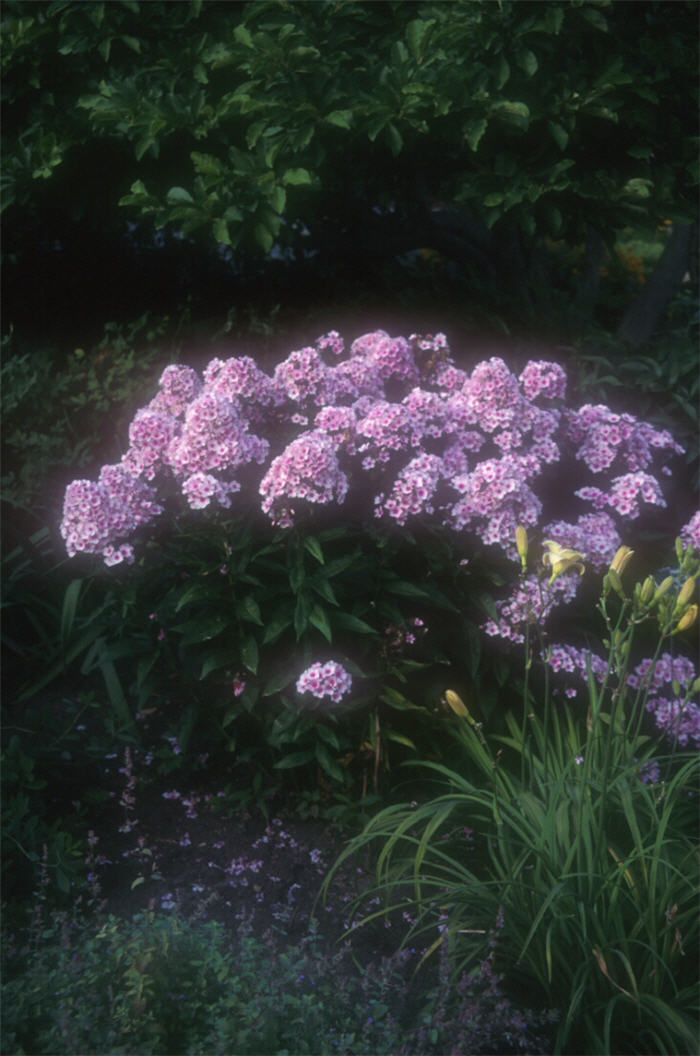| Botanical Name: Phlox paniculata 'Bright Eyes' | |
| Common Name: Bright Eyes GardenPhlox |

-
Anatomy
-
Culture
-
Design
Plant Type
Perennial
Height Range
1-3'
Flower Color
Pink, Red
Flower Season
Summer
Leaf Color
Green
Bark Color
n/a
Fruit Color
n/a
Fruit Season
n/a
Sun
Full, Half
Water
Medium, High
Growth Rate
Moderate
Soil Type
Sandy, Clay, Loam
Soil Condition
Average, Rich, Well-drained, Moist
Soil pH
Neutral
Adverse Factors
n/a
Design Styles
English Cottage, Meadow
Accenting Features
Fragrance, Showy Flowers
Seasonal Interest
Summer
Location Uses
Perennial Border, Foundation, Patio, Walls / Fences
Special Uses
Cut Flowers, Mass Planting, Naturalizing, Small Spaces
Attracts Wildlife
Birds, Hummingbirds, Butterflies
Information by: Stephanie Duer
Photographer:
Photographer:
-
Description
-
Notes
Garden phlox bloom mid to late summer, providing a cool pallet during the hottest summer months. The plants form upright clumps with narrow, lance-like foliage in deep green. Flowers appear in clusters at the tips of the branches, and come in colors from white through every pink imaginable, and some violets and lavenders. Many have prominent eyes that give the flowers a distinctive appearance. Some are fragrant. They grow about 12 to 24 inches tall and 16 to 20 inches wide, depending on variety. 'Bright Eyes' are a soft pink with a red eye.
Grow in moderately fertile, medium moisture, well-drained soil in full sun to light shade, though best flowering occurs in full sun. Prefers rich, organic soils. Needs good air circulation to help combat powdery mildew problems, so avoid placing it against a fence, of amid dense, taller plants. Intolerant of drought and needs to be watered in dry spells, though avoid overhead watering to prevent powdery mildew. Appreciates a summer mulch to keep the root zone cool. Remove faded flowers to prolong bloom period and to prevent unwanted self-seeding (cultivars generally do not come true from seed). Attracts butterflies, birds, and hummingbirds.